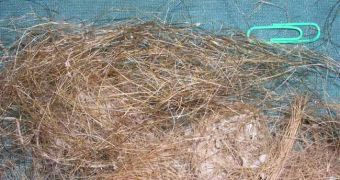In the end, extinct species could be revived not only with DNA coming from the body's tissue but also from hair! Hair has been found to be a better source of ancient DNA than bone or muscle in a research made on woolly mammoths.
"The main problem with things like bone is that it contains real DNA from the source, but also a load of DNA that is undesirable. For example, when a mammoth dies and the body starts putrefying, bacteria gets all throughout the body.
Later, as it's buried in the ground, soil bacteria get into it." said co-author Tom Gilbert of the University of Copenhagen.
"Contamination from bacteria DNA generally make up 50 to over 90 % of the raw DNA extracted from the bone and muscles of ancient specimens," Gilbert said.
In contrast, over 90 % of the DNA got from woolly mammoth hairs belonged to the animal itself.
"It was way better than we ever imagined. There's both mitochondrial and nuclear DNA in there." said Gilbert.
This could ease DNA extraction in taxonomy, forensics, anthropology, paleontology and other sciences and lead to the cloning of extinct species. The DNA analysis was made on hair taken from 10 woolly mammoth fossils encountered in northern Siberia, 50,000 to 12,000 years old. One sample belonged to the famous Adams mammoth found in 1799 and kept in a Russian museum for 200 years at room temperature, but this is not a condition for preserving DNA.
Previously, just 7 complete types of mitochondrial DNA from extinct animals had been investigated: 4 from fossil birds, 2 from mammoths and one from a mastodon.
"They all represented a lot of work, years of work. Our method showed that in less than a week, you can get 10 of them." said Gilbert.
Each sample of mammoth hair varied from 0.2 to 5 grams, but even smaller samples could have been enough. "It's not inconceivable that in the very near future, you can get away with just a couple of hair shafts or even just one hair shaft," said Gilbert.
DNA in the hair appeared to be well preserved by the keratin, the protein that hair is made of.
"We realized that the keratin in hair could protect the DNA it contains from outside influences, and hence from the sorts of degradation that affect DNA in other parts of the body, such as bone," Gilbert said.
Washing hair in a solution that destroys and washes off external DNA keeps intact the DNA within.
"Bone is really, really spongy. Fresh bone is about 8 % air, while old bones might contain up to 50 % air. What that means is that if you dump [bone] in soil and there's a lot of water around, the water will rush right in and carry bacteria into it. Hair, on the other hand, has this hydrophobic keratin. Water stays out of it." said Gilbert.
"When people thought of sequencing DNA from hair, the usual assumption was that the material must come from the hair root, which contains recognizable cells, because the hair shaft appears to be dead," said co-author Webb Miller of Pennsylvania State University.
The new study shows that a hair shaft wraps DNA in a kind of "biologic plastic", protecting it from bacterial contamination.
"Keratin is also the primary component of nails and horns, so it's possible pristine DNA could be extracted from these other body parts as well," said Gilbert.
The new method comes with best results from hair samples kept in museums or in very cold environments.
"Mummies from the Andes, Greenland or places in North Canada-they'll be great. There is hair on some Egyptian mummies, but it's very hot in Egypt. Hair might survive the heat, but DNA won't always." said Gilbert.
"Hair might also be the key to future attempts at cloning extinct animals," he added.

 14 DAY TRIAL //
14 DAY TRIAL //